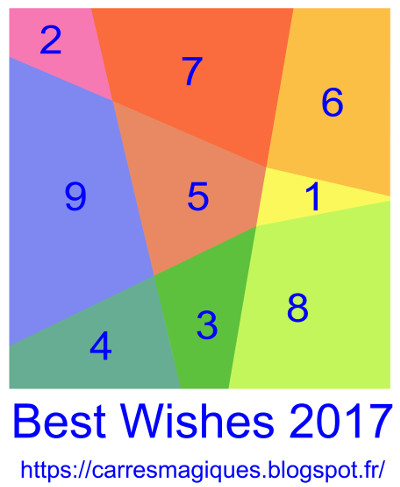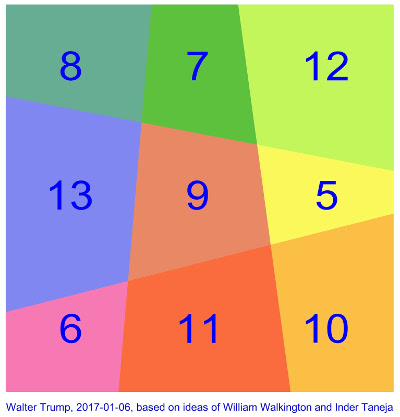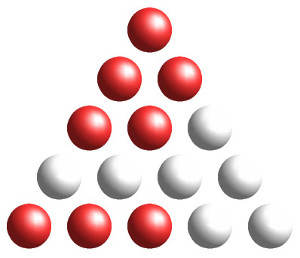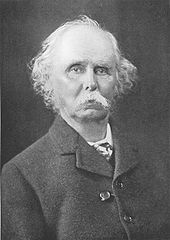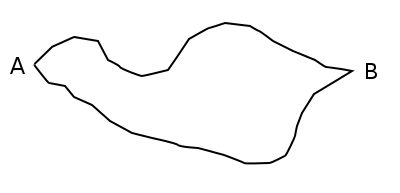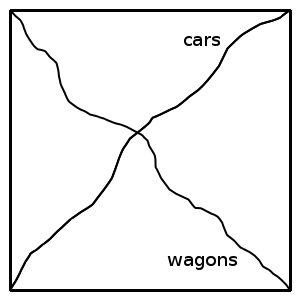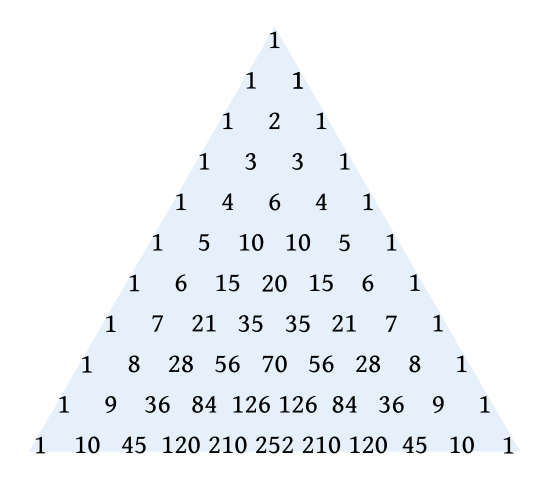
Mathematicians Steve Humble and Yutaka Nishiyama invented this game to highlight a surprising result in probability, based on a principle discovered by Walter Penney.
Two players play the game using an ordinary deck of cards. The cards will be dealt out in a row, one after another. Before the dealing begins, each player claims an ordered sequence of colors that might turn up, for example “red black red” (RBR) or “black red red” (BRR). As the cards are dealt, if three successive cards turn up in one of these sequences, the player who claimed it gets to collect those three cards as a trick, and the dealing continues. When all 52 cards have been dealt, the player who has collected the most tricks wins. (In a typical game, 7 to 9 tricks are won.)
This sounds like a perfectly even game, but in fact the second player has a strategy that will given him a significant advantage. When the first player has chosen his sequence (say, RRB), the second player changes the middle color, adds it to the start of the sequence, discards the last color, and claims the resulting sequence (in this case, BRR). This gives a decided advantage to the second player no matter which sequence his opponent has chosen. In a computer simulation of 1,000 games, Humble and Nishiyama got these results:
BBB vs RBB – RBB wins 995 times, 4 draws, BBB wins once
BBR vs RBB – RBB wins 930 times, 40 draws, BBR wins 30 times
BRB vs BBR – BBR wins 805 times, 79 draws, RBR wins 116 times
RBB vs RRB – RRB wins 890 times, 68 draws, RBB wins 42 times
BRR vs BBR – BBR wins 872 times, 65 draws, BRR wins 63 times
RBR vs RRB – RRB wins 792 times, 85 draws, RBR wins 123 times
RRB vs BRR – BRR wins 922 times, 51 draws, RRB wins 27 times
RRR vs BRR – BRR wins 988 times, 6 draws, RRR wins 6 times
Penney’s original game uses coin flips; cards are preferable because no record-keeping is required and because the finite number of cards in a deck increases the second player’s chances.
(Steve Humble and Yutaka Nishiyama, “Humble-Nishiyama Randomness Game — A New Variation on Penney’s Coin Game,” Mathematics Today, August 2010.)
